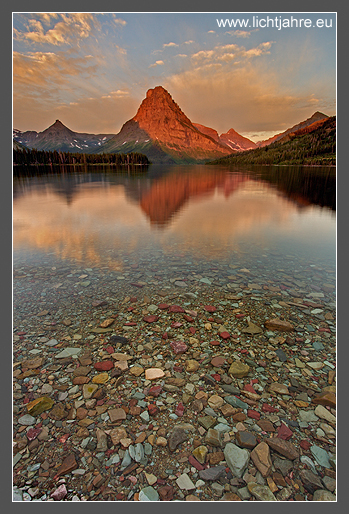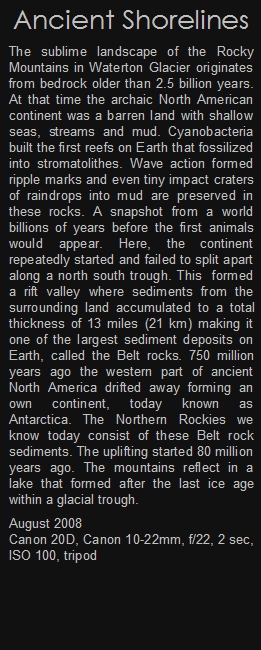

Ancient Shorelines
The sublime landscape of the Rocky Mountains in Waterton Glacier originates from bedrock older than 2.5 billion years. At that time the archaic North American continent was a barren land with shallow seas, streams and mud. Cyanobacteria built the first reefs on Earth that fossilized into stromatolithes. Wave action formed ripple marks and even tiny impact craters of raindrops into mud are preserved in these rocks. A snapshot from a world billions of years before the first animals would appear. Here, the continent repeatedly started and failed to split apart along a north south trough. This formed a rift valley where sediments from the surrounding land accumulated to a total thickness of 13 miles (21 km) making it one of the largest sediment deposits on Earth, called the Belt rocks. 750 million years ago the western part of ancient North America drifted away forming an own continent, today known as Antarctica. The Northern Rockies we know today consist of these Belt rock sediments. The uplifting started 80 million years ago. The mountains reflect in a lake that formed after the last ice age within a glacial trough.
August 2008
Canon 20D, Canon 10-22mm, f/22, 2 sec, ISO 100, tripod




















